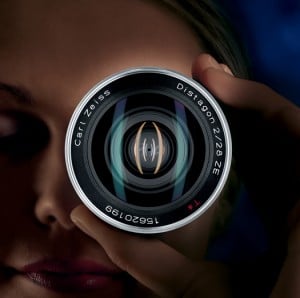
OBERKOCHEN/Germany, 12.10.2009. : The breaking dawn is a special time for photo- graphers. When the early-morning sun reluctantly chases away the still-glistening dew on the trees, this delicate transition between night and day creates moments of calm and anticipation. But without a tripod at hand, these shots will only succeed with a lens that can handle intense light.
Carl Zeiss today introduces the wide-angle lens Distagon T* 2/28 ZE with EF bayonet, suitable for all analog and digital EOS camera models. With an initial aperture opening of 1:2, it is among the most light-intense of its kind in its focal length. From landscape photography at dawn to interior shots with weak lighting and close-up portraits, the Distagon T* 2/28 ZE offers photographers plenty of room for creativity when a tripod is not used. Following the recent introduction of its two ultra-wide-angle lenses, the Distagon T* 3,5/18 ZE and the T* 2,8/21, the new Distagon T* 2/28 ZE is Carl Zeiss’ first moderate wide-angle lens with EF bayonet.
Despite its high light intensity and complex retro-focus construction, the Distagon T* 2/28 ZE has a compact build. These characteristics make the lens a highly versatile and performance-driven tool for all types of photographers. Even with its wide angle, the lens enables photographers to play fully with an image’s depth of focus. With a wide aperture opening, for example, one can effectively separate the motif from its background. With a small aperture opening, photographers can use the sharpness of the lens system for the entire image range. The floating elements design guarantees high imaging performance each time, from close-ups to infinity, enabling the photo- grapher to make razor-sharp close-up images of even the tiniest objects. Thanks to the Carl Zeiss T* anti-reflective coating and meticulously crafted lenses, the new Distagon T* 2/28 ZE deals effortlessly with reflections and stray light. Brilliant pictures work every time, even under tough lighting conditions such as a breaking dawn.
The Distagon T* 2/28 ZE will be available starting autumn for a suggested retail price of EUR 965.55 (excluding VAT)*.
Technical specifications:
| Focal length: | 28 mm |
| Aperture range: | f/2 – f/22 |
| No. of elements/groups: | 10/8 |
| Focusing range: | 0.24 m – infinity |
| Angular field** (diag./horiz./vert.): |
74/64/45° |
| Coverage at close range: | 18 x 12 cm (close-up) |
| Image ratio at close range: | 1:4.7 (close-up) |
| Filter thread: | M 58 x 0.75 |
| Dimensions (with caps): | ø 72.4 mm, length 96 mm |
| Weight: | 580 g |
| Mounts: | ZF (F bayonet) ZK (K bayonet) ZE (EF bayonet) |
| Accessories: | Lens hood included |

23 Comments
For those who are looking for a “cheaper” option, Sigma 30mm f/1.4 is probably the best bet, especially since Sigma seems to have improved some of the issues that were present in the earlier production versions of this lens.
I doubt that the marginally lower price of the new Zeiss is sufficient to make it a better choice than the 24L II or the 35L unless one needs exactly 28mm focal length…
Though this Carl Zeiss lens is MF,I dont’t know why it is expensive.
Because it’s called “Carl Zeiss”, you are paying extra for the name just like with most other “luxury” items. Brand is the king.
Hahhh! Okay, you got me there. However, it also says that it “…will be available starting autumn…” …okay, but it doesn’t make any reference to autumn of which YEAR! Hahhh! See, that’s where they get us. ;~)
The Canon’s extra stop adds distortion & weight and costs edge performance.
And AF is a drawback because the focusing ring is never as nice to use as with a true manual focusing lens.